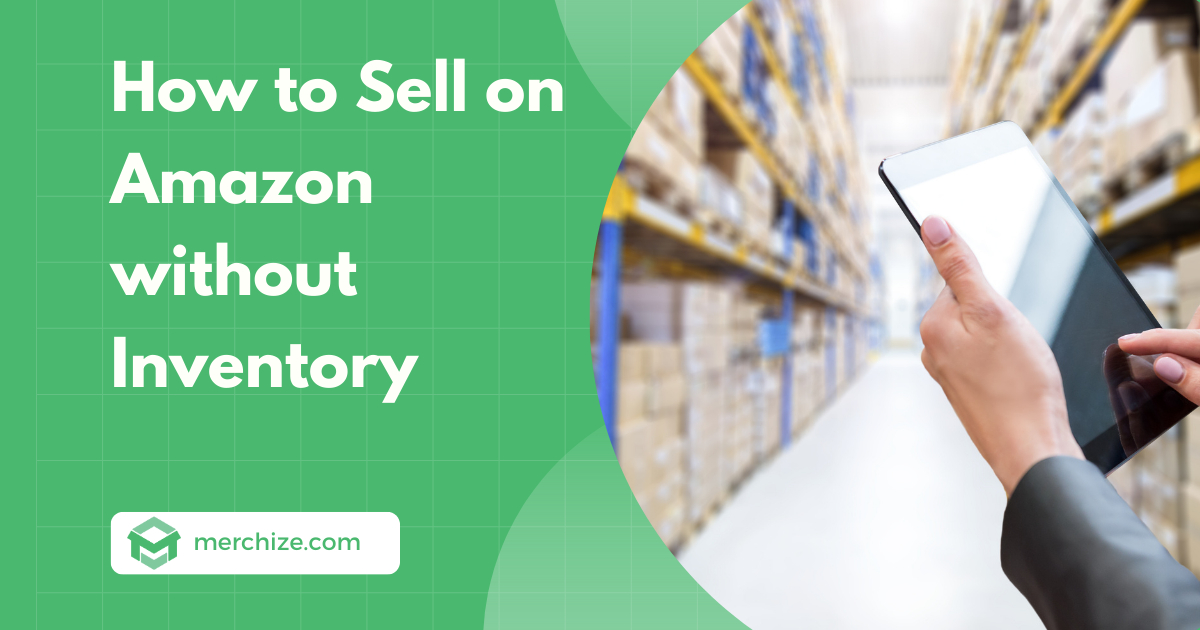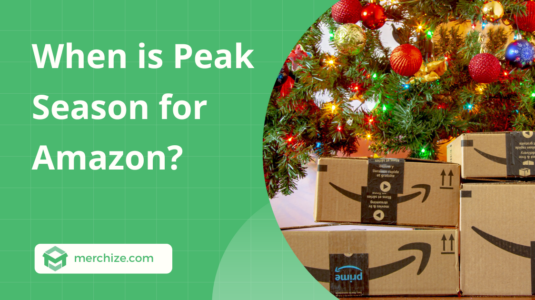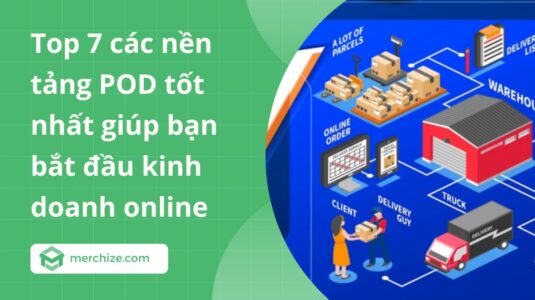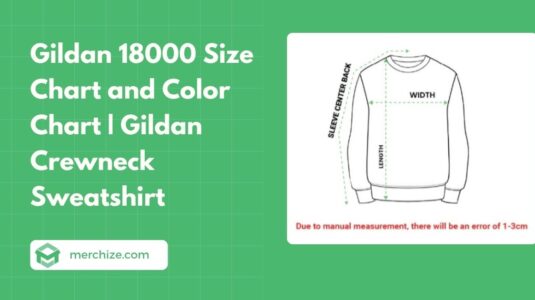Contents
Amazon is the biggest e-commerce platform in the world. When selling via Amazon, you can take advantage of the organic traffic already existing on this platform. And if you know how to sell on Amazon without inventory, there is a world of possibilities that you can explore.
Benefits of selling without inventory on Amazon
Keeping inventory is one of the biggest risks for any business. Inventory costs you money for purchasing and storing as well. Unsold stocks mean no profit and loss on initial cost and potential future storage cost.
It is a big concern for entrepreneurs, especially beginners. To sell stuff on Amazon without inventory, you will lower the risk of your business.
- Lower upfront costs: To keep inventory, you must pay for running or hiring a warehouse, not to mention the cost to buy the products upfront. By transferring this task to other agents, you can lower the cost of maintaining inventory and maybe eliminate the cost of purchasing products entirely. This way, you can save money and lower the financial risks for your business.
- Save time and effort: No inventory means that you won’t have to handle all the logistical challenges related to storing, managing, and shipping orders. Instead, you can allocate time and resources to aspects like marketing, product research, and customer service.
- Global market access: Having no inventory and no tie to your own location means that you can run your business from anywhere and reach the global audience efficiently and seamlessly.
- Reduced fulfillment and shipping times: When seeking help from other parties, you can significantly reduce the fulfillment and shipping time as well as ensure reliable fulfillment processes.
How to sell on Amazon without inventory – 3 methods
Fulfillment by Amazon (FBA)
Fulfillment by Amazon (FBA) is a fulfillment service provided by Amazon. It is the most popular choice for sellers on Amazon as there are approximately 94% of Amazon sellers use Fulfilment by Amazon services. It offers a reliable and efficient option for sellers to run a successful business on the world’s largest online retailer.
How it works
Amazon takes care of all the nitty-gritty tasks involved in selling products online, so you can focus on your business.
Here’s how Fulfillment by Amazon works:
With Fulfillment by Amazon, Amazon will take care of all the inventory management, shipping, and even customer services on your behalf. You can easily take advantage of Amazon’s advanced logistic management system and incredibly fast and efficient shipment.
Of course, Amazon charges extra fees for the storage and fulfillment services they provide. It’s like paying for the convenience of having a storage unit and a team of helpers. However, the benefits of using FBA often outweigh the costs, as it can expand your customer reach and streamline your operations.
What you need to do
- Prepare your own products and label your products as per Amazon’s requests.
- Send your products to Amazon’s fulfillment centers.
When customers place an order from your store via Amazon, Amazon will pick, pack and ship the order to your customer’s door.
After the delivery, if there is any complaint from the customer about the product or services, Amazon will handle the situation on your behalf.
Pros and Cons
Excellent solutions for storage and logistics
Amazon’s vast network of fulfillment centers allows you to store your inventory in their facilities. This means you don’t need to worry about finding space for storage or managing the logistics of warehousing. Amazon takes care of receiving, storing, and organizing your products.
FBA integrates with Amazon’s robust inventory management system. It provides real-time visibility into your inventory levels, ensuring accurate stock tracking. This helps you avoid stockouts and streamline your inventory management processes.
Prime and Fast Shipping
One of the biggest peaks of using Prime is that you have access to Amazon Prime, which is a premium service that offers fast and free shipping to millions of Amazon Prime members.
Amazon has accumulated over 200 million Prime members and most Prime subscribers quote free shipping as the main reason for them to get subscriptions to Amazon Prime.
With FBA, your products can be eligible for Amazon Prime, hence, appealing to this massive audience who prioritize speedy delivery.
Strong branding
Using FBA service is a way for you to leverage Amazon’s reputation and reliability to benefit your own business. When customers see that your products are fulfilled by Amazon, it instills confidence to make the purchase.
Customer Service
Customer Service can be tiring and exhausting. FBA can offload the burden of managing customer service from your shoulders.
Amazon handles customer inquiries, returns, and refunds. Their dedicated customer service team is trained to provide prompt and efficient support to buyers.
Dropshipping
With dropshipping, you’re about to break free from these shackles and embrace a more liberating approach to entrepreneurship. Picture yourself as a master of disguise, connecting the dots between suppliers and customers.
While FBA still requires you to buy and own products in the first place and then transfer these products to Amazon’s warehouse, dropshipping is the business model that allows you to sell without paying for the products upfront.
How it works
Dropshipping is when you work with a third-party provider who supplies the products and handles storage, packaging, and shipping. What you need to do is select what potential products to sell, figure out how to market them to potential customers, and how to deliver the best customer service.
What you need to do
- Source your products from suppliers: With this model, you don’t have to buy or own products in order to sell them. Instead, you will source a reliable supplier or wholesalers who offer dropshipping services.
- Select products you want to sell from your supplier’s selection: Do your research and find the hottest, trendy products in the markets that can actually solve customers’ problems.
- List selected products on your store and start selling: After deciding what products you want to sell, you can now list the products on your store. To make your products more appealing to customers, add informative, attractive product photos and videos, and write a killer copy.
- Promote your products: Advertise your products to as many people as possible. Convert them to buyers.
- Notify and transfer information to suppliers when an order is placed: Once you receive an order, you forward the necessary information including the customer’s shipping address, product details, and any other relevant instructions to your supplier. This step can be done manually. However, it is more efficient and less time-consuming if you can connect your store with the supplier’s fulfillment for a fully automated process.
- Update order tracking and provide customer support: During delivery, you provide customers with order tracking information, so they can monitor the progress of their shipment. Other than that, you also have to address all the customer inquiries and complaints.
That’s basically everything you need to do, the rest like stock management, packaging, and shipping, will be handled by your suppliers.
Pros and Cons
Pros
- Lower cost
Dropshipping requires zero cost for purchasing products and no cost for inventory management, which will significantly cut down the cost of running your business.
Wide product selection: There is no limitation to how many products you can sell with dropshipping. You can collaborate with multiple suppliers or wholesalers, unlocking an endless selection of goodies to offer your customers.
- Location independence
Dropshipping sets you free from the shackles of a physical store. Your business is entirely online based. You won’t have to ever deal with managing products physically.
- Scalability
With drop shipping, the sky’s not the limit—it’s just the beginning. Since you don’t have to worry about inventory management or fulfillment, you can break free from the gravitational pull of physical inventory and focus on blasting off into new horizons. Expand your customer base, rev up your sales engine, and watch your business soar to new heights.
Cons:
- High competition
Dropshipping is a highly saturated and competitive market. Due to the low entrance barrier, anyone can start dropshipping, which results in oversaturated markets.
Besides, all sellers are sourcing products from similar providers, causing overlapping products in the marketing. It only heightens the competition.
- Product Quality Control:
You must rely on your providers on delivering the promised quality. If a supplier sends out subpar or faulty items, it reflects poorly on your brand and can lead to dissatisfied customers. There is little you can do to reverse the situation.
That’s why it’s crucial to thoroughly vet your suppliers and maintain open lines of communication to address any quality concerns promptly.
- Shipping and Delivery Challenges
Your suppliers handle shipping from beginning to end. However, if anything comes up–it might be delayed shipping, wrong addresses, or damaged packages, it’s you who bears responsibility for unhappy customers.
Make sure to find providers with efficient shipping services and transparent tracking, as well as communicate and proactively support your customer to keep everything under control.
- Limited brand control
It is quite a challenge for sellers to build a brand with dropshipping. Everything from packaging to shipping materials is set as default with no room for you to instill your brand identity. It leaves you with fewer opportunities to create strong branding outside the digital space.
Print on demand
Compared with other options, Amazon print-on-demand opens more opportunities for businesses to thrive independently. You are not tight to one platform or a certain number of products and designs.
With print on demand, you can create your own products using your own designs and promote them to your target audience. And the rest will be taken care of by print-on-demand suppliers.
>>> If you are considering between Amazon Print on demand vs FBA, read this.
How it works
Print on demand is a business model in which products, such as t-shirts, hoodies, mugs, or posters, are printed and customized using your designs. Rather than producing items in bulk and storing them in inventory, POD accepts individual items to be printed and fulfilled as orders come in.
This model is basically dropshipping except for the fact that now you are entitled to design your own products. The unique designs add a reason for customers to choose your products and give your products an edge over other competitors.
What you need to do
- Make your own designs: Do your research on the market trend. Find a profitable and undersaturated niche to tap into. Create designs that appeal to the target audience.
- Create product mockups: Before listing your products and selling them, you must prepare all product photography. Using product mockups is the best way for print-on-demand sellers to visualize how the products look like.
- Upload your designs: With the designs you have in hand, now you can put them into the products and upload them to the fulfillment system. From there you can sync your products to your store so that each time a customer buys your products, the order will be immediately synced and processed by your print-on-demand provider.
- Promote your products: Everything is set. It’s time for you to show your best skills and promote your products to your target audience. Utilize social media platforms, email marketing, influencer collaborations, content marketing, and other channels to boost your audience.
Pros and Cons
Pros
- No Inventory Worries: With print-on-demand, you don’t need to worry about holding stock or managing a warehouse. The products are created on-demand, saving you space, time, and money.
- Endless Design Possibilities: Tap into your creative genius! Whether you’re an artist, designer, or have a knack for catchy phrases, print-on-demand services like Merchize give you the freedom to create unique designs for various products such as t-shirts, mugs, and phone cases.
- Low Start-up Costs: Starting an online business can be costly, but with print-on-demand, you can keep your initial investment minimal. There’s no need to purchase inventory upfront, reducing the financial risks associated with traditional retail models.
Cons
- Lack of Hands-On Control: As your designs are produced by a third party, you may feel a bit detached from the production process. It can be strange not to have direct control over quality checks and packaging.
- Quality Concerns: While print-on-demand companies strive for excellence, occasional quality issues can arise, such as misprints or color variations. However, reliable companies like Merchize take customer satisfaction seriously and usually offer solutions or refunds for any problems encountered.
Why you should use Merchize?
Whether you are a newbie or an experienced print on demand seller, Merchize can help you to set up a successful business and make money on Amazon without inventory.
- Seamless Integration with Amazon: If you’re eyeing platforms like Amazon to reach a broader audience, Merchize provides an easy Amazon integration process. Expand your business effortlessly and leverage the vast customer base on Amazon.
- Customer Support and Transparency: Merchize values its customers and offers reliable support throughout the entire process. They prioritize transparency, keeping you informed about production and shipping timelines, so you can manage customer expectations effectively.
So, don’t let the burden of inventory hold you back from starting your dream business. Dive into the world of print-on-demand with Merchize, and let your creativity soar like a brush on a canvas or a quip in a comedy club! Get ready to make your mark in the online marketplace, one unique design at a time.
How to start selling on Amazon without inventory
Product research
Selling on Amazon without the hassle of inventory management offers a world of opportunities for aspiring entrepreneurs. And effective product research is the key to successfully venturing into this territory.
- Identifying niche markets and trending products:
Finding a niche market is one way to fare against the harsh competition in a crowded space like Amazon. You can identify niches with considerable demand and low competition by conducting keyword research and competitor analysis.
Other than looking out for specific niches, keeping up with the latest consumer trends is incredibly helpful to get product ideas. Follow industry influencers, keep up with social media trends, or do keyword research – These will help you to gain insight on what to sell next!
- Utilizing Market Research Tools:
When doing your market research, don’t forget to back up your observation and decisions with data and facts. To gather data-driven insight, you should source help from market research tools built specifically for Amazon, for example, Jungle Scout, Helium 10, SellerApp, Keepa, etc. These tools offer a quick and comprehensive approach to understanding market trends and measuring customer demands.
If you don’t have access to these tools, manual product search methods such as browsing Amazon’s bestseller lists, reading customer reviews, and analyzing competitor listings can still yield valuable insights.
- Finding Reliable Suppliers for your products:
Besides looking at the market, you can also watch out for new potential products from suppliers’ sides. With luck, you might stumble upon great products that solve customers’ problems yet aren’t ubiquitously available in the market.
Merchize, for example, provides a wide range of unique products. All of our products are bought into production after rigorous market research to unearth any possible opportunities for our sellers. Just browse our catalog and you might find unique product ideas for your online business.
Amazon listing optimization:
When it comes to selling on Amazon without inventory, mastering the art of listing optimization becomes your secret weapon for success. With creative strategies and insights, you can effectively optimize your product listings to attract buyers, maximize sales, and ultimately thrive in the online marketplace.
Write compelling product descriptions:
- Craft engaging and persuasive descriptions that highlight the unique selling points of your product.
- Use descriptive language to evoke emotions and connect with your potential buyers.
- Incorporate A+ content in your product descriptions to enhance visual appeal and credibility. This feature enables you to showcase additional images, videos, and detailed product information, providing a comprehensive buying experience.
Optimize keywords and utilize SEO techniques:
- Conduct thorough keyword research to identify relevant search terms for your products. Strategically place these keywords in your listing’s title, bullet points, and product description to improve visibility.
- Leverage backend search terms and bullet points effectively. Utilize these sections to include additional relevant keywords that couldn’t fit your product title or description.
Implement effective pricing strategies:
- Keep competitive pricing to attract buyers. Research similar products and adjust your prices accordingly. Do go to low or high. Putting mid-tier prices for your products make them more sustainable in the long run.
- Consider offering bundle offers, coupons, and Amazon deals to incentivize customers and maximize sales and profit.
Understand Amazon’s seller policies and guidelines:
- Stay updated with Amazon’s policies to ensure compliance and maintain a good standing on the platform. Familiarize yourself with prohibited practices and follow guidelines for product categorization, images, and customer communication.
Analyze sales metrics and performance:
- Regularly monitor key performance indicators (KPIs) like conversion rate, click-through rate, and customer reviews. Identify areas for improvement and optimize your listings accordingly.
- Take advantage of Amazon’s sales analytics tools to gather valuable data for informed business decisions. Analyze customer behavior, track sales trends, and identify opportunities to optimize your listings further.
Add appealing and informative images
Lastly, effective product photography is crucial for showcasing your products effectively. Utilize high-quality images that highlight key features and benefits, and ensure they meet Amazon’s image guidelines.
Customer services
If you choose to sell via Amazon FBA, you won’t have to worry about customer service.
But, if you are print on demand or dropshipping seller, order management and customer services will top as one of your first priorities.
- Proactively communicate and be transparent with customers: Keep updating your customers about the current order status, share tracking numbers promptly and guide how to track their shipments.
If anything that may cause delays arises, don’t forget to inform customers promptly and provide revised delivery estimates.
- Promptly address customers’ concerns: Take customer concerns seriously and address them promptly. Provide solutions or alternatives that demonstrate your commitment to customer satisfaction.
- Introduce clear policies and processes for returns and refunds: Make the process hassle-free for customers, ensuring a smooth and positive experience even in such situations.
- Reach out to satisfied customers and ask for feedback and reviews. It is recommended to personalize your requests and provide clear instructions on how to leave feedback. Automated email campaigns can help streamline this process.
Marketing and Promoting Your Amazon Store
Utilize social media and content marketing:
Social media platforms and content marketing are powerful tools for expanding your Amazon store’s reach.
Engage your target audience by creating compelling content that resonates with their needs and interests. Share industry insights, product tutorials, and customer success stories.
Additionally, consider utilizing social media advertising to drive traffic to your Amazon store and increase conversions. For example, running a Facebook ad campaign targeting relevant demographics can yield remarkable results.
Run Amazon PPC campaigns:
Amazon Pay-Per-Click (PPC) campaigns are a game-changer when it comes to boosting product visibility and sales.
- Set up targeted campaigns by selecting relevant keywords that align with your products.
- Optimize your ad spend by monitoring and adjusting bids based on performance data.
- Analyze campaign metrics, such as click-through rates and conversion rates, you can continually refine your approach and maximize your return on investment (ROI).
Creating a professional and trustworthy brand image:
Establishing a strong and trustworthy brand image is key to standing out on Amazon.
- Optimize your product listings with well-crafted descriptions, accurate information, and relevant keywords.
- Utilize high-quality visuals, including professional product images and informative videos, to build credibility and gain customer trust. The images should also reflect your brand identity. A visually appealing and trustworthy brand image helps drive sales and encourages customer loyalty.
Generating positive customer reviews and ratings:
Positive customer reviews and ratings are invaluable for building trust and attracting potential buyers. Encourage satisfied customers to leave genuine reviews by providing exceptional customer service and following up with personalized emails. Proactively manage customer feedback by promptly addressing any issues or concerns. A strong review profile not only boosts sales but also enhances your store’s reputation.
It might take time for you to run and try to understand how to sell on Amazon without inventory. But once you learn and succeed, you will see this business model as one of the best options to gain money – It can run automatically. It saves you a lot of time and offers you the flexibility to run your business from anywhere.





